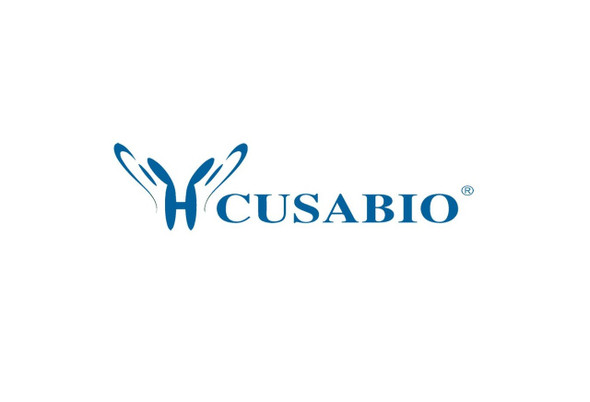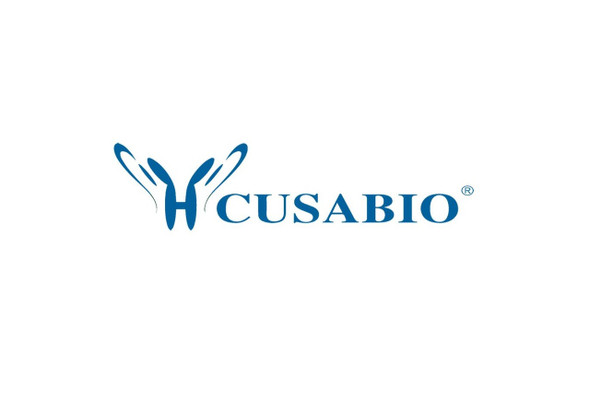Cusabio Virus & Bacteria Recombinants
Recombinant Human adenovirus C serotype 5 Protease (L3) | CSB-EP361000HILb1
- SKU:
- CSB-EP361000HILb1
- Availability:
- 3 - 7 Working Days
Description
Recombinant Human adenovirus C serotype 5 Protease (L3) | CSB-EP361000HILb1 | Cusabio
Alternative Name(s): Adenain Adenovirus protease
Gene Names: L3
Research Areas: Others
Organism: Human adenovirus C serotype 5 (HAdV-5) (Human adenovirus 5)
AA Sequence: MGSSEQELKAIVKDLGCGPYFLGTYDKRFPGFVSPHKLACAIVNTAGRETGGVHWMAFAWNPHSKTCYLFEPFGFSDQRLKQVYQFEYESLLRRSAIASSPDRCITLEKSTQSVQGPNSAACGLFCCMFLHAFANWPQTPMDHNPTMNLITGVPNSMLNSPQVQPTLRRNQEQLYSFLERHSPYFRSHSAQIRSATSFCHLKNM
Source: E.coli
Tag Info: N-terminal 10xHis-tagged and C-terminal Myc-tagged
Expression Region: 1-204aa
Sequence Info: Full Length
MW: 28.1 kDa
Purity: Greater than 90% as determined by SDS-PAGE.
Relevance: Cleaves viral precursor proteins (pTP, pIIIa, pVI, pVII, pVIII, and pX) inside newly assembled particles giving rise to mature virions. Protease complexed to its cofactor slides along the viral DNA to specifically locate and cleave the viral precursors. Mature virions have a weakened organization compared to the unmature virions, thereby facilitating subsequent uncoating. Without maturation, the particle lacks infectivity and is unable to uncoat. Late in adenovirus infection, in the cytoplasm, may participate in the cytoskeleton destruction. Cleaves host cell cytoskeletal keratins K7 and K18.
Reference: "De novo derivation of proteomes from transcriptomes for transcript and protein identification." Evans V.C., Barker G., Heesom K.J., Fan J., Bessant C., Matthews D.A. Nat. Methods 9:1207-1211(2012)
Storage: The shelf life is related to many factors, storage state, buffer ingredients, storage temperature and the stability of the protein itself. Generally, the shelf life of liquid form is 6 months at -20?/-80?. The shelf life of lyophilized form is 12 months at -20?/-80?.
Notes: Repeated freezing and thawing is not recommended. Store working aliquots at 4? for up to one week.
Function: Cleaves viral precursor proteins (pTP, pIIIa, pVI, pVII, pVIII, and pX) inside newly assembled particles giving rise to mature virions. Protease complexed to its cofactor slides along the viral DNA to specifically locate and cleave the viral precursors. Mature virions have a weakened organization compared to the unmature virions, thereby facilitating subsequent uncoating. Without maturation, the particle lacks infectivity and is unable to uncoat. Late in adenovirus infection, in the cytoplasm, may participate in the cytoskeleton destruction. Cleaves host cell cytoskeletal keratins K7 and K18.
Involvement in disease:
Subcellular Location: Virion, Host nucleus
Protein Families: Peptidase C5 family
Tissue Specificity:
Paythway:
Form: Liquid or Lyophilized powder
Buffer: If the delivery form is liquid, the default storage buffer is Tris/PBS-based buffer, 5%-50% glycerol. If the delivery form is lyophilized powder, the buffer before lyophilization is Tris/PBS-based buffer, 6% Trehalose, pH 8.0.
Reconstitution: We recommend that this vial be briefly centrifuged prior to opening to bring the contents to the bottom. Please reconstitute protein in deionized sterile water to a concentration of 0.1-1.0 mg/mL.We recommend to add 5-50% of glycerol (final concentration) and aliquot for long-term storage at -20?/-80?. Our default final concentration of glycerol is 50%. Customers could use it as reference.
Uniprot ID: P03253
HGNC Database Link: N/A
UniGene Database Link: N/A
KEGG Database Link: N/A
STRING Database Link: N/A
OMIM Database Link: N/A









